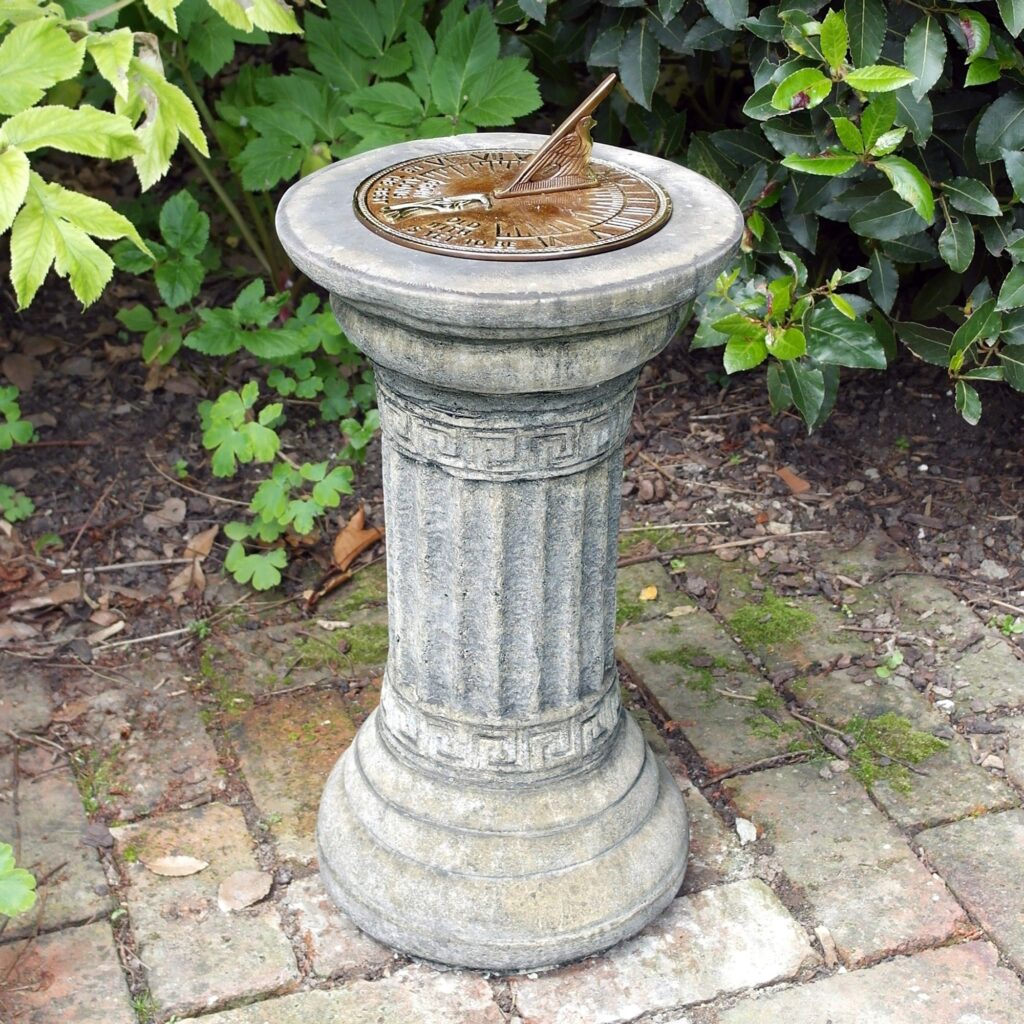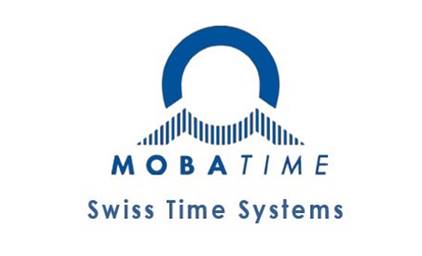Have you ever wondered what life was like before people were obsessed with time? If you work in corporate America, your calendar is a series of 30- to 60-minute meetings. If you’re lucky, there’s time in between to refill your water glass and grab a snack.
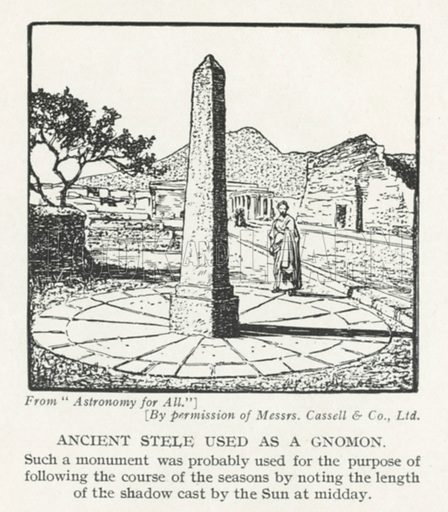
Work aside, you have to show up at a certain, preappointed time to get your hair cut. Or meet your friends for dinner at a restaurant.
But how did we get here? Why is timekeeping such an important part of daily life?
The truth is, humans have been keeping time for most of history. But their clocks didn’t look like ours. Instead, they used shadows cast by the sun. And for them, not being on time could be a matter of life or death.
“Really?” You’re probably saying. “Life and death?”
Well, picture this:
Two hunters set out from the relative safety of their caves. Neither has a watch — those won’t be invented for another few centuries.
One hunter knows that the sun moves in a pattern. If he sets out at daybreak, he can move away from home as long as the shadows get shorter. If he turns around as soon as the shadows begin to lengthen, he’ll make it home before dark.
The other hunter doesn’t know this. He ventures too far. He doesn’t turn toward home until the sun starts to set. He won’t make it home before dark. Instead, he’s caught in the dark without shelter. He’ll spend the night unprotected from the elements. He’s easy prey for wild animals with large teeth and good night vision. At best, it’ll be an uncomfortable night. At worst, he doesn’t make it home at all.
As civilizations grew, people found ways to tell time more precisely. Shadow clocks, and then sundials with hours, allowed people to ask and answer, “what time is it?”
We like to think that living on a schedule is something that only happened recently. But it actually started with sundials!
Timekeeping Through History
1500 BCE Babylon Shadow Clocks
1371 BCE Damascus Sundials with Hours
1300 BCE Egypt Oldest existing sundial found
1046 BCE China Sundials called “Rigou” were used
700 BCE Greece First written reference to sundials in the Old Testament
297 BCE Rome Sundials in common use
1800’s Europe & America Sundials still used to set the time of mechanical clocks.
Sundials became a common sight in Rome around 267 BCE. A citizen of this time cursed the maker of the sundial: “For our misfortune he has chopped up the day into slices. When I was young there was no clock but my belly…now…we have to eat only when it pleases the sun.”1
Even though sundials were invented long ago, they’re surprisingly accurate timekeeping devices. In fact, sundials were used to calibrate the first mechanical clocks!
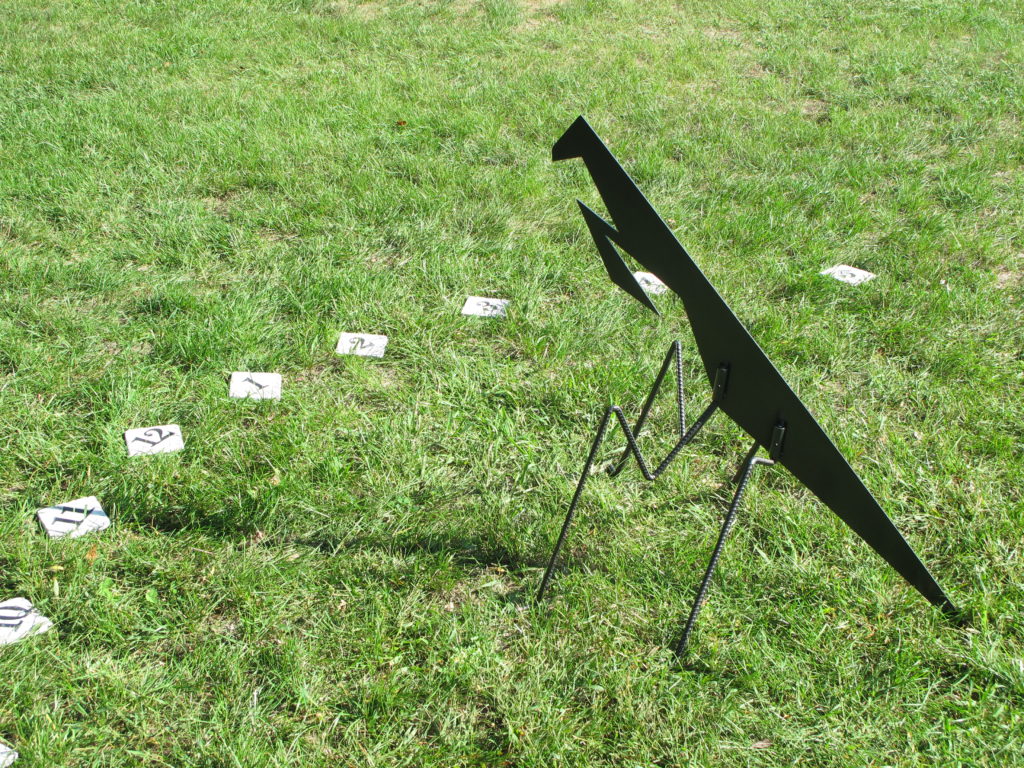
How Do Sundials Work?
Sundials take advantage of the shadows cast by the earth’s daily rotation around the sun. They consist of a gnomon and a dial.
The part of the sundial that casts a shadow is called the gnomon. The gnomon is usually a hypotenuse triangle, with the longest edge on top. On a sundial, the top edge of the gnomon is called the style.
The style is the time-telling edge of the gnomon, and to work properly, it must be parallel to the earth’s axis. That means the angle of the style must be equal to the latitude of the gnomon’s location on Earth. Here in Grand Rapids, Michigan, that makes the angle 42.96 degrees.
The top point of the Gnomon is called the nordus. For the sundial to show the correct time, it must point to the North Star.
The dial is the flat plate or surface where the shadow from the gnomon is cast. The dial contains markers to show what time is when the shadow hits. As the earth rotates, a shadow cast by the Gnomon moves around the dial.
How To Read a Sundial
Now that you know how a sundial works, you can probably guess how to read the time. Gnomon is Greek for “one who knows.” The description is apt because the shadow cast by the gnomon tells you the time!
If it’s a sunny day, and Daylight Savings Time is not in effect, a sundial is easy to read. Just look at the marker the shadow hits, and you’ll have the approximate time. During Daylight Savings Time (from mid-March to early November), most sundials will be an hour early.
That’s because a properly calibrated sundial tells solar time. Solar time is measured by the Earth’s rotation relative to the sun. Due to the Earth’s elliptical orbit (it’s not quite round), solar time won’t always line up exactly with your watch.
Some sundials will have a plaque that tells you how to adjust from solar time, displayed on the sundial, to local time. The adjustments required depend on the time of year.
Praying Mantis Sundial Pays Homage To Our Artistic Roots
As commercial clockmakers, we don’t often get the chance to keep time with the sun. The clocks we build display local time, and they’re as accurate as the cell phone in your pocket. Electronic controllers reset automatically for Daylight Savings Time and for power outages.
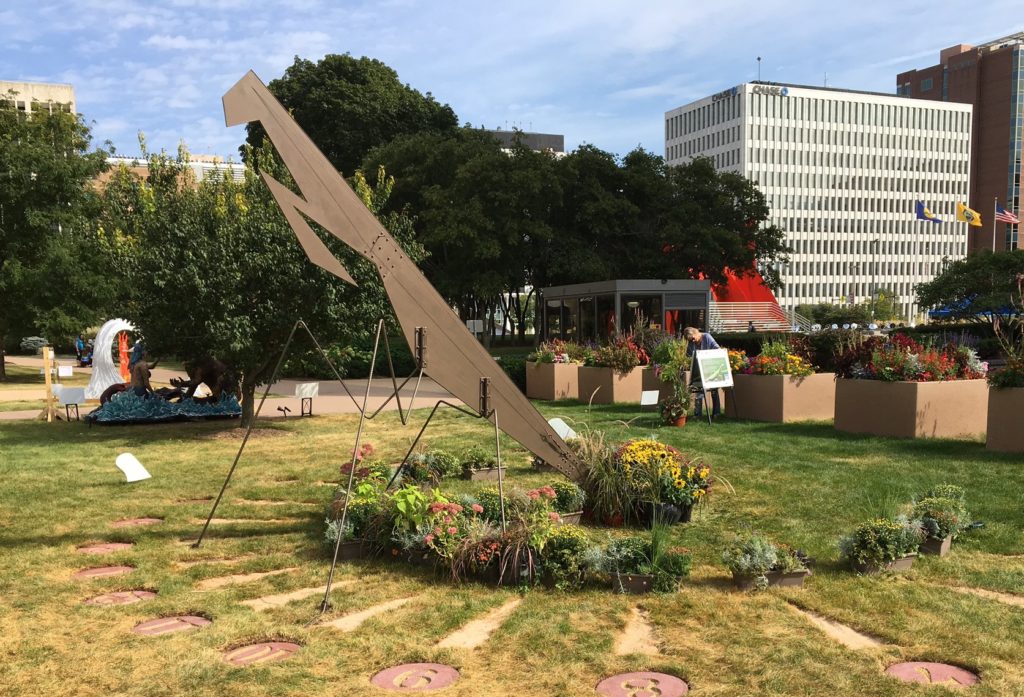
The 2018 ArtPrize competition in Grand Rapids, Michigan gave us the chance to pay homage to the way our early ancestors kept time. It also gave our clockmaker, Ian, a chance to go back to his artistic roots.
Ian Macartney started out making neon sculptures, which he exhibited locally, here in Grand Rapids. He turned his love of “tubes of color and light” into a business – fabricating neon signs and neon clocks for customers all over the world. His passion for clockmaking led him to start Lumichron, and we’ve been building commercial tower clocks ever since.
Ian brought his ArtPrize entry to life with help from his wife and business partner Karen. Ian’s larger-than-life metal and wood Praying Mantis sculpture formed the gnomon of the sundial. The dial was a 30-foot diameter garden, complete with flowers and stepping stones to mark the hours. Romence Gardens and Greenhouses contributed to the landscaping.
If you’re on the same latitude as Grand Rapids, Michigan, you can create your own sundial using our pattern. If you’re on a different latitude, you can still make one, but you’ll need to calculate different angles for your gnomon so it tells time accurately.
Is A Sundial Right For Me?
Sundials are pretty to look at. And they make great conversation pieces. But, they have their drawbacks. They’re not easy to read at a glance, like a tower clock. They’re not always accurate (due to the earth’s elliptical path and daylight savings). But perhaps the biggest drawback is that they only tell time when the sun is shining.
That’s why our customers opt for a mechanical post or tower clock, instead. If you’re looking for something that can still tell time on a rainy day, a mechanical clock is a better bet. And, since our clocks are custom built, they can be designed to fit your space to a T.
If you’re in search of a unique timepiece for your garden or public greenspace, get in touch. We’d love to make time for you!
–––
Resources
- Rohr, R.R.J., Sundials: History, Theory, and Practice. Toronto: University of Toronto Press, undated.
